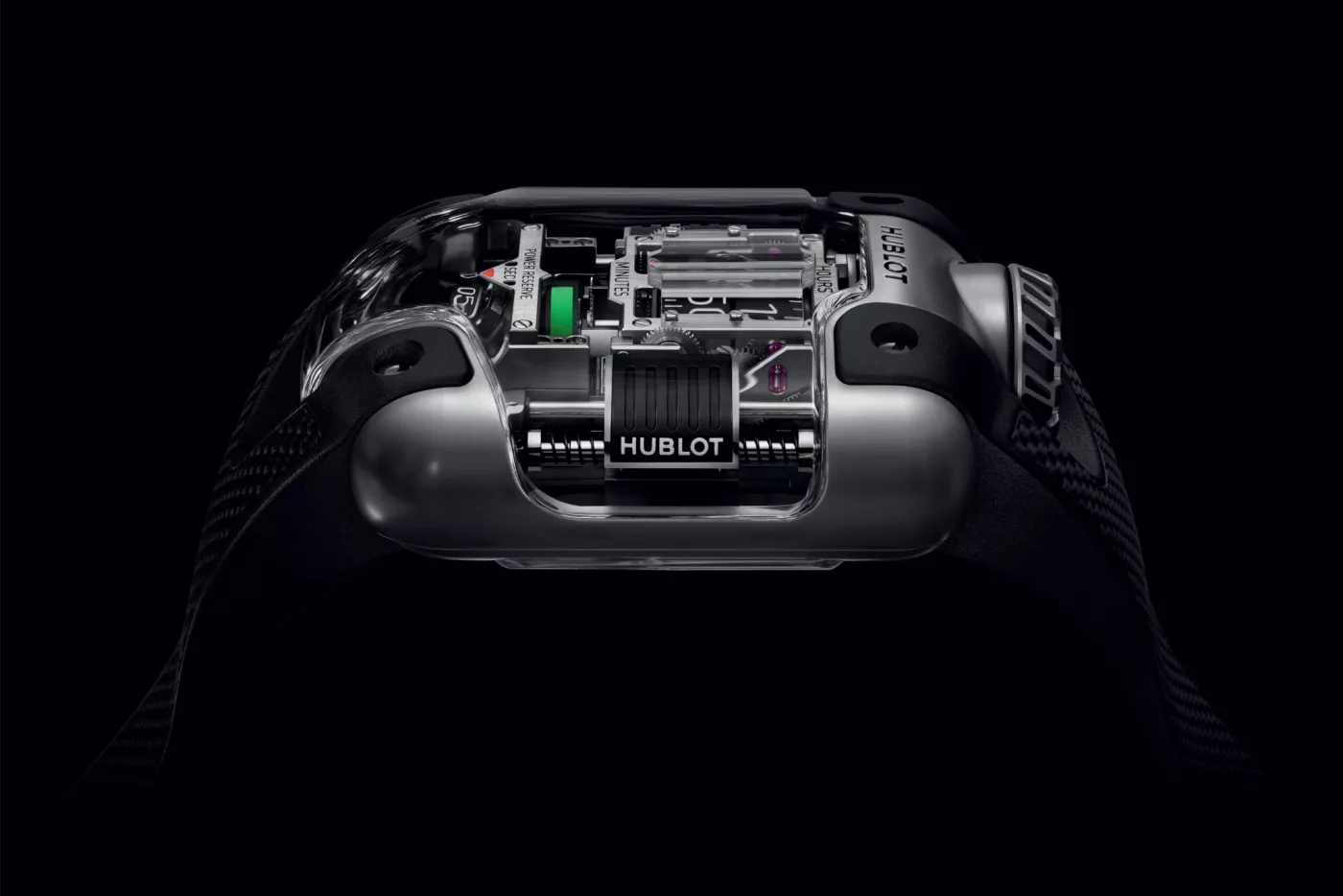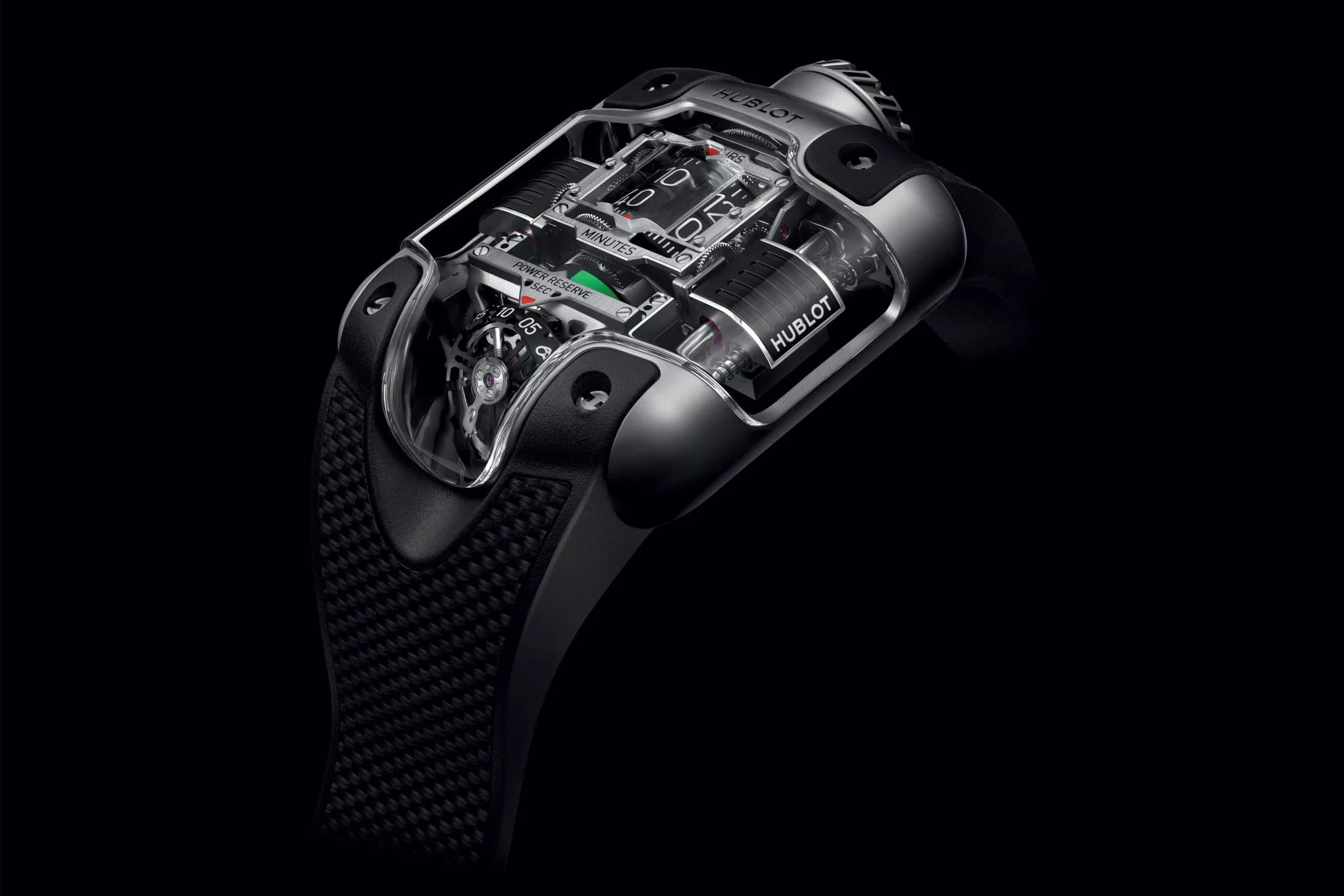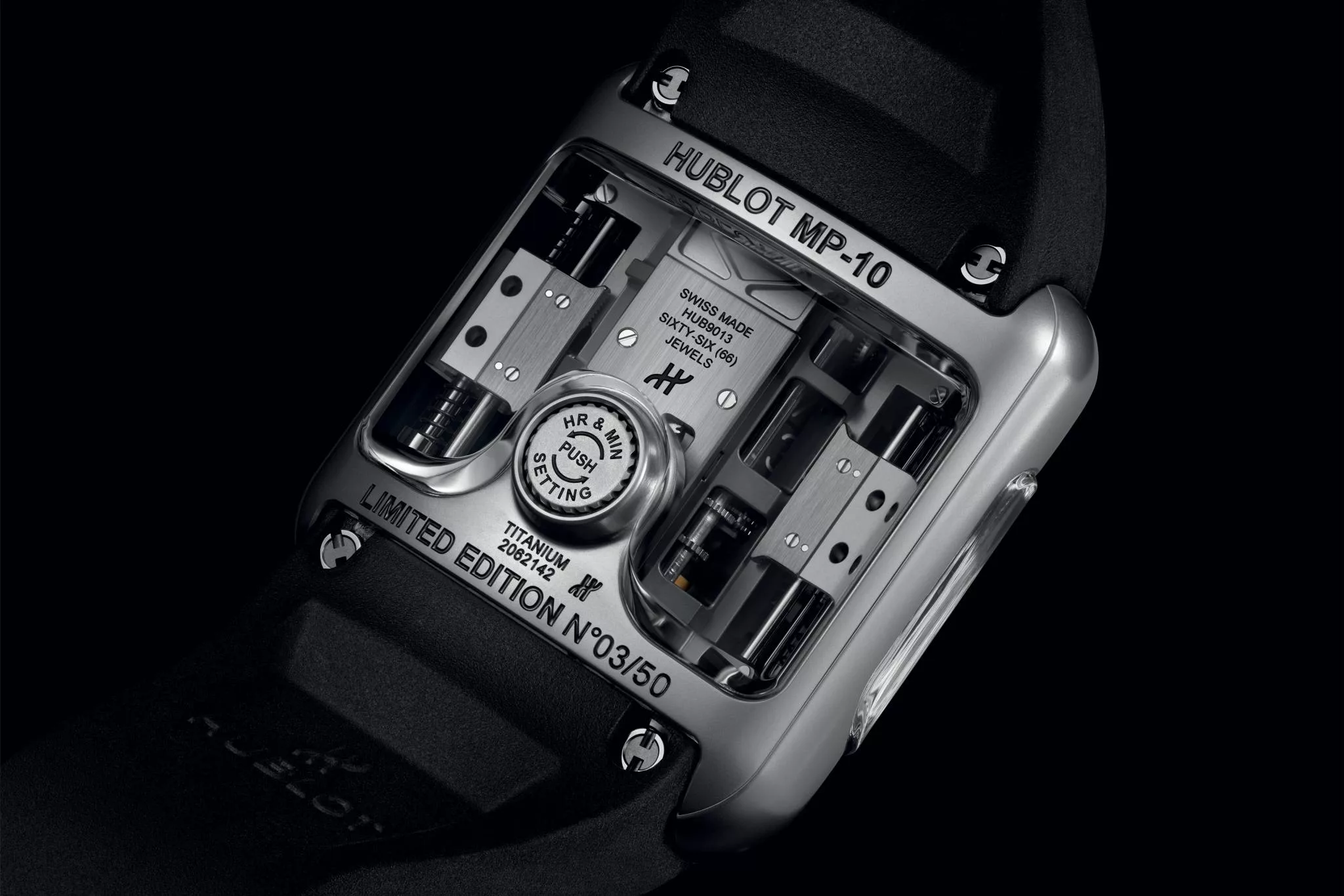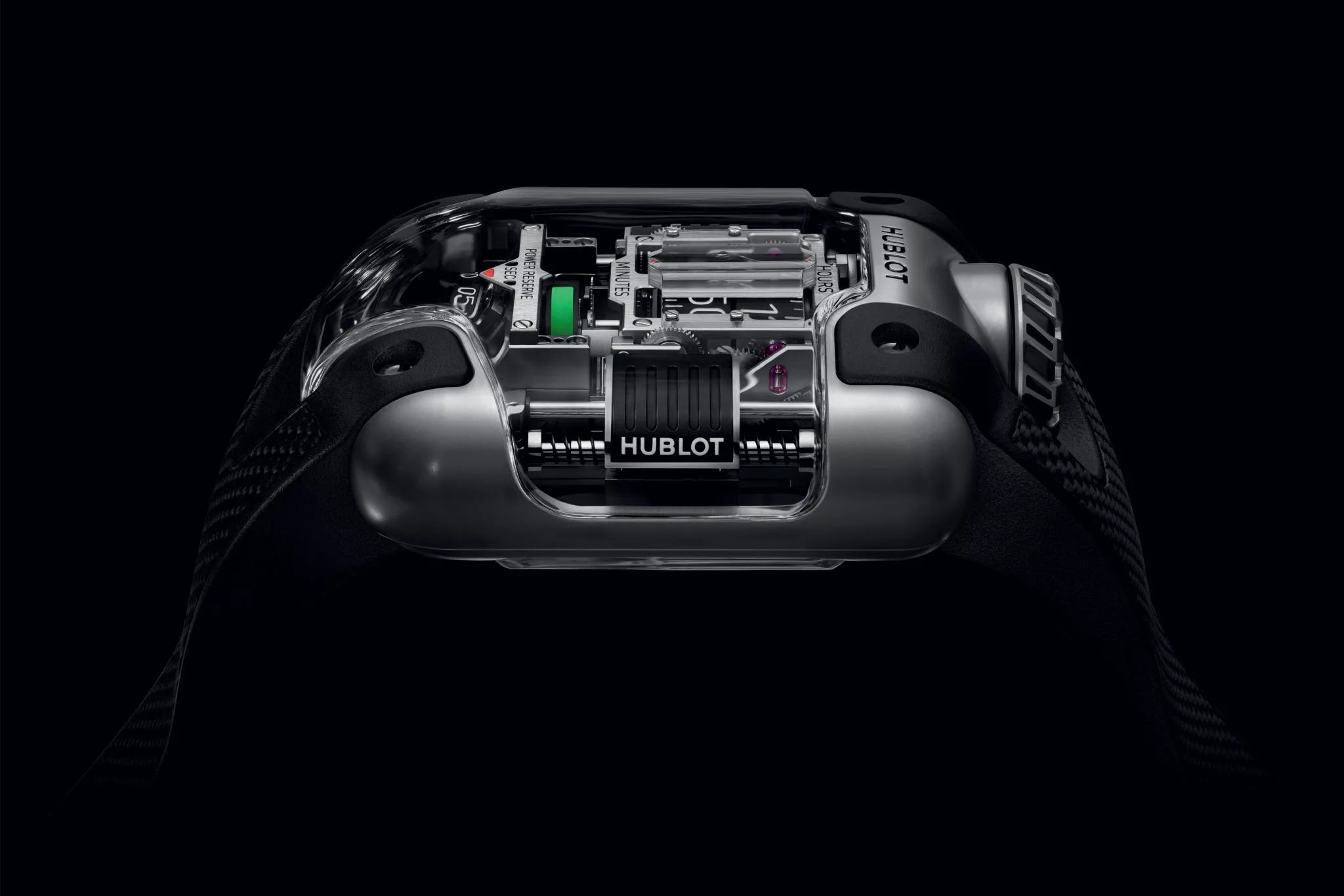BY HARLAN CHAPMAN-GREEN
Hublot is a bit of an odd one in the horological world. It makes some watches which I wouldn’t ever recommend purchasing new because of their price/parts value ratio, they also make some watches I’d recommend in a heartbeat, and then they also happen to make watches which have struck a chord with the mainstream market. You see, dear reader if you’re reading this, it’s probably not because you’re a watch newbie, but if you were, then Hublot is probably one of the names you’ve heard of alongside Rolex, TAG Heuer, Omega and a few others. To be a successful high-end watchmaker with youthful designs and youthful buyers like Hublot does, you’ve got to be doing something right.
But let’s not get distracted. As I said, Hublot’s watches are either something I’d highly recommend or something I’d avoid entirely, and there isn’t really a fence to sit on for me. The Hublot watches I recommend are the ones where they go a bit mental in some way. Typically, that’s with the case material, which is in line with their “Art of Fusion” mantra. Occasionally, they let loose and reinvent everything about the traditional wristwatch that they can (think the old MP Ferrari watches). The brand new MP-10 Tourbillon Weight Energy System Titanium watch is just that.
The MP-10 Tourbillon (which, I’m not typing all of that again) watch does away with everything conventional about a wristwatch; I wouldn’t even be surprised if you’re meant to wear it around your ankle instead.
Underneath the beautifully curved sapphire crystal, which is undoubtedly a nightmare to make, sits the HUB9013 calibre which is the focus of most of the attention. It consists of 592 individual pieces and took 5 years of R&D to create. The tourbillon is set at an angle which most likely helps it counteract gravity when on the wrist (don’t quote me on that). It also does away with any form of traditional dial, instead opting for the movement to become the dial.
There are a total of four indications on this piece and they’re displayed using barrels primarily. The hours and minutes occupy the largest barrels and have clear markers with red arrows to avoid any confusion. Below those two is a power reserve barrel, which has red and green zones to make it super clear what you’re looking at. The seconds are affixed to the tourbillon in an all-aluminium construction, for which a patent is pending.
You might be looking at the MP-10 and thinking about how you’re meant to wind it (well, you’re probably wondering what it is you’re looking at). The winding is done automatically via the two black parts on either side of the movement. Rather than have a conventional rotor, the MP-10 has these two white gold things which slide up and down and wind the mainspring barrel. How do they power the mainspring? Uh, magic. Let’s go with magic. The power reserve is approximately 48 hours.
All of this is quite complicated, as you’d imagine, and squeezing that into a case the size of a regular watch isn’t going to happen. In light of this, it shouldn’t come as a surprise that the MP-10 measures 54mm x 41.5mm x 22.4mm. It’s made of titanium (mostly), which should help with the weight. The appearance is going to be as divisive as any other Hublot. I happen to like it, but I would understand if you felt it was more of a crossover between a jukebox and a boiler.
Luckily, if you do think it’s more like a part of a central heating system, you won’t have to be forced to see MP-10s all the time in the forums as Hublot is only making 50 examples of these.
The cost? CHF250,000, I like that, no messing around, a quarter of a million. Who’s going to buy this? I have no idea, other than rich people, I would, just saying.






